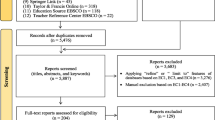Abstract
In 1999, we first reported on various methods of teaching anatomy subsequent to visits to a variety of medical schools in the United States and Europe. We compared the number of contact hours for lectures, dissection classes and tutorials and provided different models for the teaching of anatomy. With respect to the nine French medical schools surveyed, it is clear that the French model is characterized by being lecture-orientated (time in lectures > time in tutorials > time spent on dissection). For the American model (also in the UK and some other parts of Europe), the training is often characterized by being dissection-based (time spent on dissection > time in lectures > time in tutorials; 10 medical schools surveyed). Exceptionally, in one Australian school, time in tutorials exceeds time in lectures (dissection = 0). The differences between the French and American models relate to teaching aims—where dissection predominates, the aims are not just the learning of anatomical facts but include practical skill acquisition and experiential learning. In 2001, to help us change the methods of teaching of anatomy in our medical school at CHU Necker-Enfants Malades (Paris V, France), we asked other French medical schools (and some foreign schools) to suggest ways of organizing anatomy training within certain time constraints. In this paper, we present the answers received. The responses received were of two kinds: (1) those providing a description of the anatomy teaching in their own medical school; (2) those providing a system for organizing the teaching if we, in Paris, have 120 hours in total to teach gross anatomy (except neuroanatomy). In the latter case, a considerable variety of different, and innovative, alternative schemes were suggested that are described in this article.
Similar content being viewed by others
References
Association of American Colleges (1998) Medical school admission requirements United States and Canada, 1999–2000
Aziz MA, McKenzie JC, Wilson JS, Cowie RJ, Ayeni SA, Dunn BK (2002) The human cadaver in the age of biomedical informatics. Anat Rec 269:20–32
Bouchet A (1996) In defense of human anatomy—a commentary. Surg Radiol Anat 18:159–165
Drake RL, Lowrie DJ, Prewitt CM (2002) Survey of gross anatomy, microscopic anatomy, neuroscience, and embryology courses in medical school curricula in the United States. Anat Rec 269:118–122
Ellis H (2001) Teaching in the dissecting room. Clin Anat 14:149–151
Fitzgerald MJ (1992) Undergraduate medical anatomy teaching. J Anat 180:203–209
Marks SC Jr (2000) The role of three-dimensional in health care and medical education: the implications for anatomy and dissection. Clin Anat 13:448–452
McKeown PP, Heylings DJ, Stevenson M, McKelvey KJ, Nixon JR, McCluskey DR (2003) The impact of curricular change on medical students’ knowledge of anatomy. Med Educ 37:954–961
Moore NA (1998) To dissect or not to dissect? Anat Rec 253:8―9
Plaisant O, Cabanis EA, Delmas V, Le Floch-Prigent P, Oberlin C, Lassau JP (1999) A propos de l’enseignement de l’anatomie du corps humain au cours des études de médecine. Synthèse de faits et arguments nord-américains, européens et français, et rapport de mission de l’Institut d’Anatomie Paris V, Stanford University. Paris June 1999, internal report
Plaisant O, Delmas V, Cabanis EA, Lassau JP (2001) Enseignement de l’anatomie humaine dans une faculté de médecine américaine: l’exemple de Stanford. Press Med 30:29–34
Rosse C (2001) Terminologia Anatomica: considered from the perspective of next generation knowledge sources. Clin Anat 14:120–133
Acknowledgements
We would like to take this opportunity of thanking all the institutions and medical schools that participated in this survey, and especially to all those anatomists who so generously gave their time to answer our many questions. We would also like to thank the Dean of UFR Necker-Enfants Malades, Prof. P. Berche, who, after this study, allowed us to change the system of anatomy teaching in our medical school.
Author information
Authors and Affiliations
Corresponding author
Rights and permissions
About this article
Cite this article
Plaisant, O., Cabanis, E.A. & Delmas, V. Going back to dissection in a medical curriculum: the paradigm of Necker-Enfants Malades. Surg Radiol Anat 26, 504–511 (2004). https://doi.org/10.1007/s00276-004-0271-x
Received:
Accepted:
Published:
Issue Date:
DOI: https://doi.org/10.1007/s00276-004-0271-x




